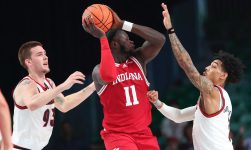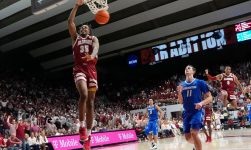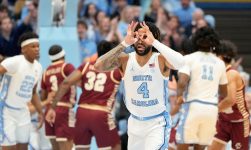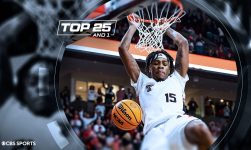As the landscape of NIL continues to evolve, there are currently a lot more questions than answers regarding the long-term model. Mike Krzyzewski spent 42 years coaching men’s basketball at Duke before retiring at the conclusion of the 2021-22 season, when NIL was just getting started.
The Hall of Famer is still involved with the Blue Devils as an ambassador to the university and he recently shared his thoughts on the current state and the uncertain future of college athletics and basketball with CBS Sports.
“I don’t think there is a clear path of where it’s heading, because so much of it is tied up in lawsuits with the NCAA,” Krzyzewski, speaking ahead of an event for the V Foundation, told CBS Sports. “Different conference realignment, lawsuits, you do not have a parent organization that really is leading college sports right now.
“All these things, hopefully some of them will be settled this summer, the legal issues. Once the legal issues are settled, hopefully a new structure for doing things is formed. Then you can get some semblance of order. Right now there really isn’t any order.”
In April, the NCAA officially said schools can facilitate NIL deals with third parties — but not pay players directly. Nothing is currently black or white, and congress has had discussions on whether players should be considered employees of their respective universities.
There is also the House v. NCAA lawsuit and other antitrust cases with the main argument being how NCAA limits compensation and whether or not there is an unlawful restraint of trade.
NIL is a complex situation with multiple pieces involved and no set standard on how to do anything, despite several deals reaching six-figures and some having an even higher valuation. The lack of uniformity across the country and current legal wrangling make the landscape feel chaotic, but Krzyzewski is hopeful that in the end everything will work out for the best.
“NIL is a really good concept that has gone further than anybody from the NCAA could have imagined,” he said. “There is no transparency and there are no guard rails, but overall it’s a good idea.”
Coach K walks off the court for the final time at the end of the 2021-22 season.
Getty Images
Another hot topic of conversation in college athletics is the transfer portal as NIL opportunities became something else to consider for players who are looking for a new school. NCAA transfer rules typically dictated that a player who transfers has to sit out a year, however, that will no longer be the case. Also in April, the NCAA announced student-athletes will be allowed unlimited transfers with immediate eligibility.
“It’s a good idea, but you have almost 3,000 Division I and Division II male players who have gone into the transfer portal,” Krzyzewski said. “That’s well over a quarter of all the young men who play in Division I and Division II. Is that good? Bad?
“It is what it is, along with NIL. It’s tough to make predictions. If I knew who was leading and in charge, I think I would be more apt to make some level of prediction, but you or I cannot say who is in charge because there is nobody in charge, which is kind of scary.”






